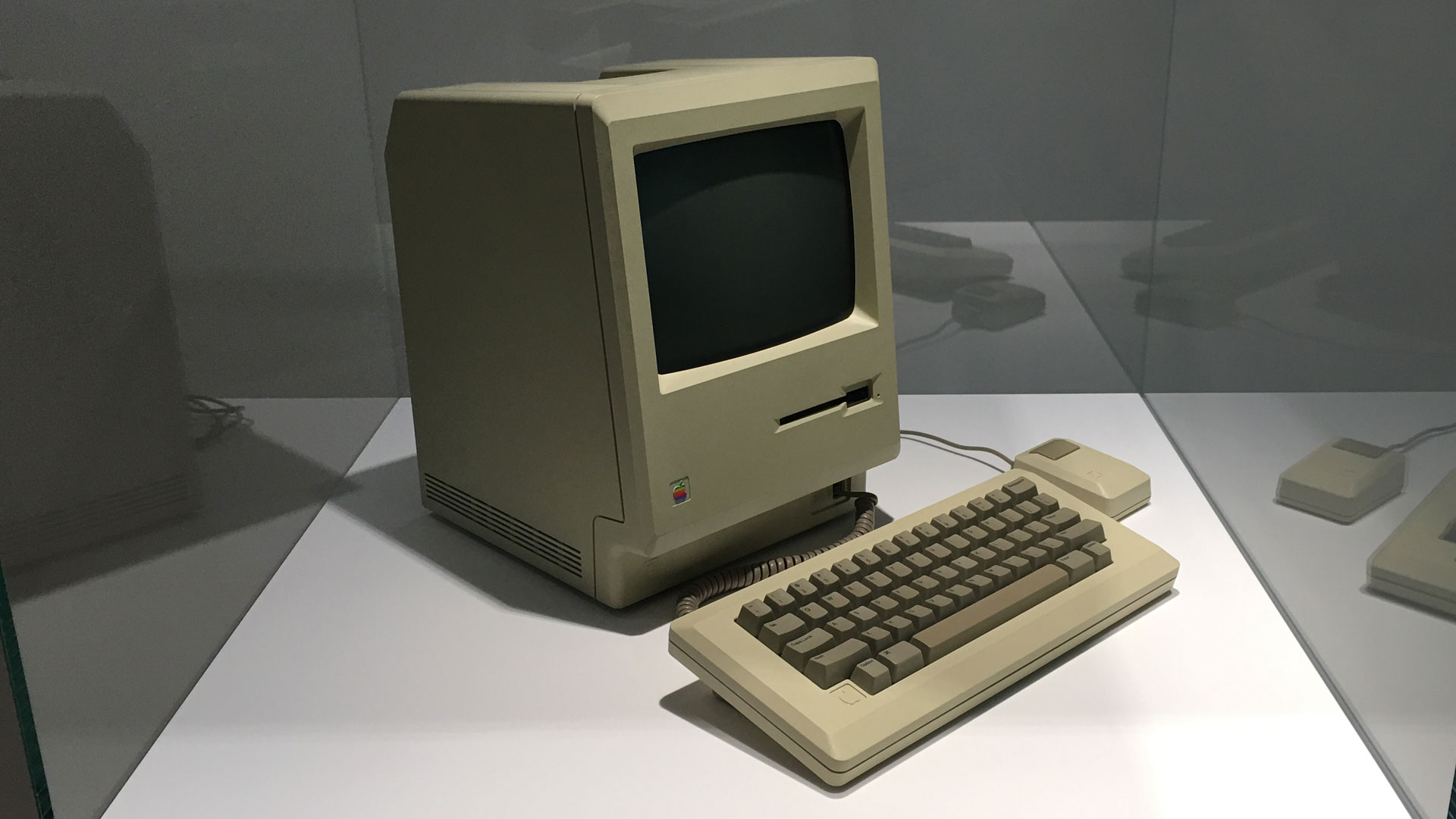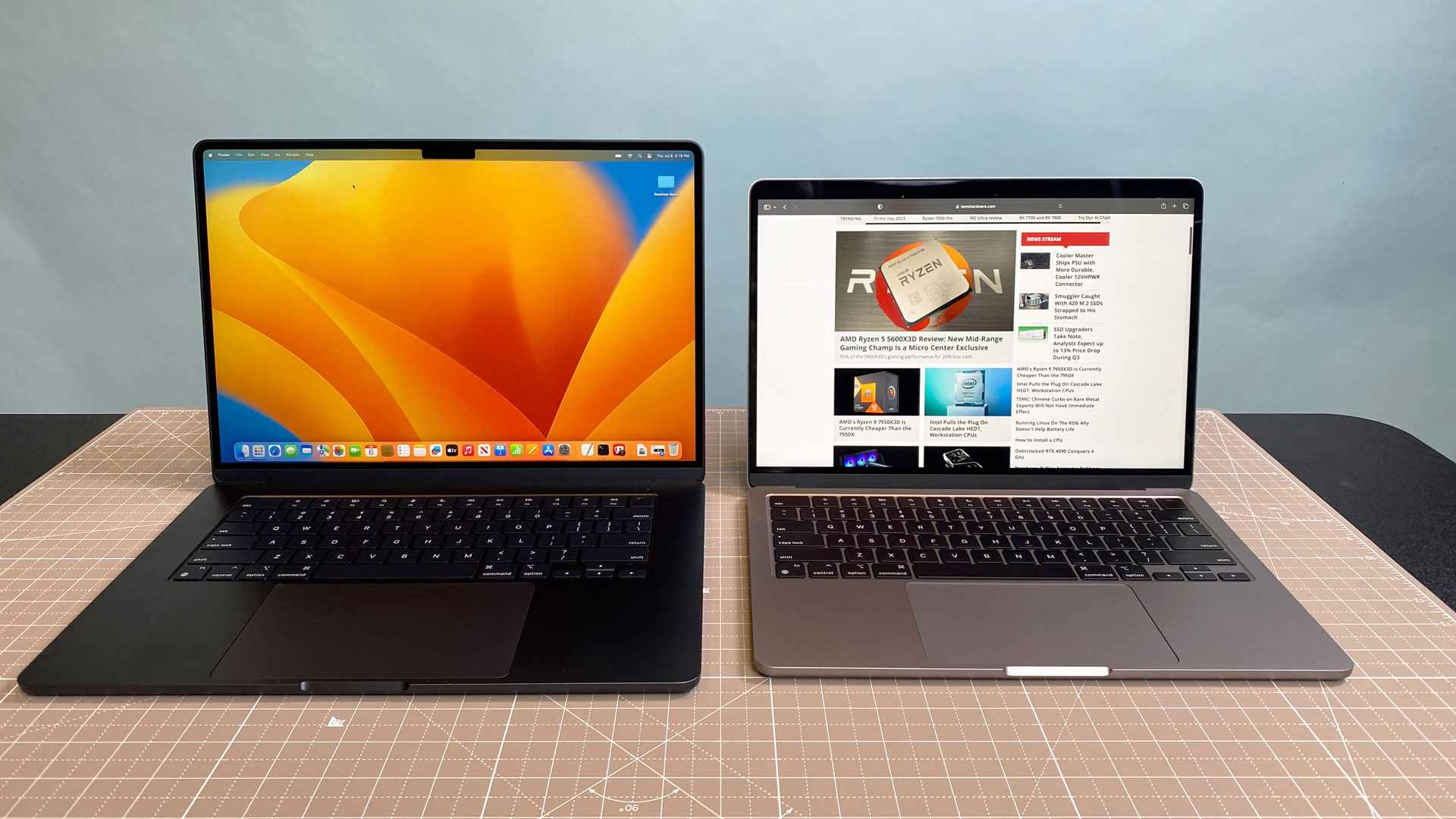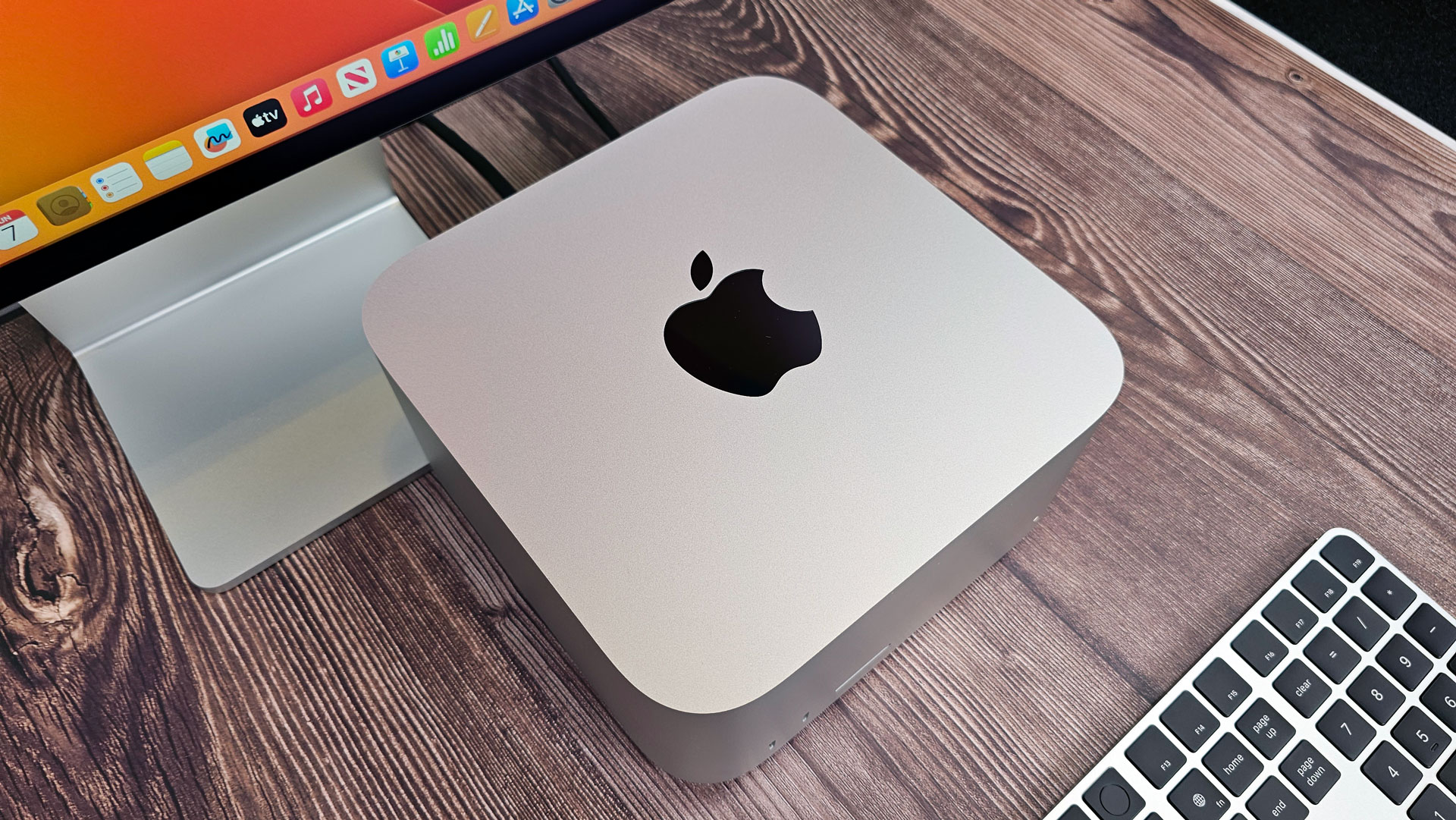40 years in, the Mac is part of a vibrant PC ecosystem
The most open Apple platform is in a good place going into its fifth decade.

It has been 40 years since Apple launched the Macintosh, trading the command line for a graphical user interface (GUI), icons, and a mouse. The $2,495 computer ran on a Motorola 68000 processor, had 128KB of RAM, and used a 9-inch CRT screen with a resolution of 512 x 342 pixels.
That first Macintosh, later rebranded the Macintosh 128K, popularized the GUI (inspired by work at the Xerox Palo Alto Research Center) and changed how the mass market uses computers. "If you can point, you can use a Macintosh," a brochure read.
Over the next 40 years, Apple released a slew of computers in different form factors, which have been reviewed over and over again. We could cover them all here, from the Macintosh Plus, Macintosh II, and the Macintosh Portable to the PowerBook, the Macintosh TV (with a built-in TV tuner card!), and the Power Mac. Crucially, Apple's design turned into a cultural phenomenon with the iMac G3 in 1998, popularized first by its Bondi blue chassis and transparent design (many additional colors would follow it in 1999 and the early aughts).
The 2000s would bring a series of designs we still see remnants of today, including the iMac G5, fitting everything into a display, the 2005 Mac Mini, as well as the introduction of the MacBook and MacBook Pro. This was also the time of a great transition for Apple. In 2005, the company shifted from PowerPC to Intel, including a Developer Transition Kit in a Power Mac G5 case that ran on an Intel Pentium 4 at 3.6 GHz. This would eventually lead to the first generation Mac Pro tower. In 2008, Steve Jobs pulled the first MacBook Air out of a manilla envelope, forcing Intel's partners to compete. Intel created the Ultrabook branding, leading to thin designs like modern Asus Zenbooks and the Dell XPS 13, forever cementing the MacBook Air's legendary status.
There was the much-derided trash can Mac Pro, and various iterations of the "cheese grater" Mac Pro. And, of course, a whole new slew of designs since the launch of Apple M1 in 2020, including the new Mac Studio. With the Mac Pro updated to the M2 Max and M2 Ultra at WWDC this year, Apple completed a second processor transition away from Intel and to its own custom processors.
The 40th anniversary is one where Apple has control of its own destiny, but is also a critical part of a vibrant PC ecosystem. Here's what we're thinking about going into the Mac's fifth decade:
The last open Apple platform
A lot has changed at Apple over the last forty years. While it's likely that a ton of employees went to work at Apple because of the Mac, it's no longer the company’s key business. That would be the iPhone – at least for now.
The iPhone and iOS have been crucial to Apple’s success, partly because developers must distribute apps through the company’s App Store. (This is also the case on iPads and iPadOS, Apple TV and tvOS, and soon the Vision Pro and visionOS.) But while the Mac does have a version of the App Store, you don't have to obtain your software through it.
Plenty of software is offered through the Mac App Store, but you can use Safari (or Chrome, or Edge, or Firefox, or whatever other browser you use) to download software from the web. Yes, you can get into the whole thing about the fact that Apple requires signed apps (the Allow apps downloaded from anywhere" option went away with macOS Sierra), but there are still ways to run them.
In other words, while the company that once used an iPad commercial to ask "What's a computer?", it does know — because the Mac is one. If you want to make a Mac app, you don't have to officially go through Apple to distribute it (though doing so, or at least signing it using an Apple developer account, will make it easier on the people installing it). You also don't owe Apple a cut that way. If you own a Mac, you can get software from wherever you want and pay through any developer's payment system. This is crucial to the thriving indie developer ecosystem on the Mac.
That's a level of freedom that other Apple platforms have yet to see. (Though the EU may change that soon enough.) Here's hoping we're still talking about that at the next major anniversary.
Away from Intel, on its own
During the 40 years of the Mac, it has gone through three significant architectures: PowerPC, Intel x86-64, and now Apple Silicon.
Some of the best Mac designs debuted with Intel chips, like the MacBook Air and the Mac Pro. But Apple's latest redesigns, from the M2 MacBook Air line to the latest M3 MacBook Pros, as well as new towers running M2 Ultra, have been stellar.
Part of this is due to how well the transition went. Rosetta 2 ran software coded for Intel Macs like a charm, and many developers were eager to get their apps running on Macs.
Get Tom's Hardware's best news and in-depth reviews, straight to your inbox.
We lost some functionality; those who want to run Windows now have to do so through a virtual machine in Parallels. But, regarding software transitions, the move from Intel was painless for most, and the performance and efficiency, especially early on, was worth it.
With the transition to its own Silicon, Apple has left some other features to the PC world. Apple didn't use touch screens with Intel chips, and it hasn't budged on Apple Silicon, instead leaving that to the iPad.
But Apple Silicon has reinvigorated the Mac, and Apple has clearly doubled down with the platform. I suspect the change will be looked at positively on the next big anniversary.
State of play
The Mac hasn't turned 40 with a reputation for gaming.
Since Apple launched its own silicon, it's been claiming it's taking gaming more seriously. While hardcore PC gamers will scoff at this, some progress has been made here. But it seems unlikely that it will ever catch up to the diversity of titles released day and date on Windows.
At WWDC 23, Apple introduced Game Mode as part of macOS Sonoma, prioritizing CPU and GPU usage to ensure consistent frame rates, as well as doubling Bluetooth sampling for better support for Xbox and PlayStation controllers. It also has a Game Porting Toolkit for developers to help convert shaders and graphics code to Apple's Metal API.
Some great games have come to Mac, running natively on Apple Silicon. Death Stranding, Resident Evil Village, No Man's Sky, and Stray are all on macOS, running natively. But those all came years after their launch on PC and consoles. Perhaps the biggest launch in 2023 was Baldur's Gate 3, one of the year's most popular games, though it was released a bit later than on Windows. Lies of P launched on both Mac and PC simultaneously.
But another big game left the Mac: Counter-Strike 2 usurped Counter-Strike: Global Offensive. While Valve keeps a legacy version of CS:GO running, it isn't maintaining a Mac version. A support document stated that macOS players were "less than one percent" of players of the game. Counter-Strike 2 didn't get a Mac release.
Speaking of Valve, its game launcher, Steam, is still an important part of Mac gaming. Some games, like No Man's Sky and Baldur's Gate 3, didn't launch on the Mac App Store but only on Valve's platform. On the other hand, Capcom's Resident Evil 4 remake is only available for the Mac on the App Store and not available on Steam. Hopefully, this choice of distribution brings more development to the Mac.
There's a base here, but Apple has more developer relations work to do for us to come back at the 50th anniversary and declare it a success.
The Mac of the future
In a recent post to his blog Daring Fireball, noted Apple enthusiast and podcaster John Gruber wrote, "I now think [the Mac is] a forever platform, where forever is at least as far into the future as I can imagine. Decades, plural." (If you're interested in the idea of the open software ecosystem on the Mac, that's a great further read, by the way).
At 40, it's still hard to think of Apple without the Mac. People may do tons of computing on phones and tablets now, but laptops and desktops are where people go to be seriously productive or run resource-intensive applications.
There's new hardware coming. The 40th anniversary of the Mac comes just after Apple launched its Vision Pro headset for pre-order and ahead of its Feb. 2 release date. In Apple's view, the future involves spatial computing using a headset.
And yet, even the Vision Pro lets you plug in your Mac and run a monitor for it in AR. Clearly, no one's looking for this to replace the Mac yet.
For all the "PC versus Mac" rhetoric in enthusiast hardware circles, the last forty years have proven that Apple's computer is part of a vibrant PC ecosystem, sometimes setting design or efficiency benchmarks for others to follow.
What will the Mac of the future look like? Heck if I know. But as Intel, AMD, Qualcomm, Nvidia, and others make components powering all sorts of new experiences on the Windows side, the PC space will have plenty of competition. Apple will have to continue to innovate, and I expect the future will be fascinating.

Andrew E. Freedman is a senior editor at Tom's Hardware focusing on laptops, desktops and gaming. He also keeps up with the latest news. A lover of all things gaming and tech, his previous work has shown up in Tom's Guide, Laptop Mag, Kotaku, PCMag and Complex, among others. Follow him on Threads @FreedmanAE and BlueSky @andrewfreedman.net. You can send him tips on Signal: andrewfreedman.01
-
brandonjclark Just read the brochure linked and wow, I had no idea that even back then Apple already was offering the "Apple Card" for financing a Mac.Reply -
COLGeek Love 'em or hate 'em, Apple and the Mac drove innovations into the marketplace that all PC users have benefited from for decades. That has to be respected and appreciated.Reply -
kep55 I had a macPro cheese grater circa 2009 for a while. It was pretty nice. What I ABSOLUTELY hated was how Apple purposely crippled the machine so it would only run 32 bit apps even though it was designed using 64 bit hardware. Apple is even worse than mictosoft in making not only its software but also its hardware completely incompatible with previous versions. The best I could do with mine was flash the EFI from1,1 to 2,1 and install El Capitan (osX 10.11).Reply -
palladin9479 So this article is saying that the Macintosh Personal Computer is not in fact a Personal Computer but some other kind of computer that is not personal?Reply
I present Apple's next generation development.
9BnLbv6QYcA -
TJ Hooker Reply
The fact that you can install/run apps from any source on a Mac, not just the app store. Without voiding your warranty, in contrast to jail breaking an iphone for example.ezst036 said:I missed what was "open" about the Mac walled garden. What was it?
At least, that's what the article says, I've never looked into it as I've never owned a Mac. -
Geef I remember using mac's that looked like that in middle school, they were a little newer though. They had OS 6 on them. Whatever they were I remember them not having the requirements for OS 7.Reply -
stonecarver I have to say the mac we had back than was at the time gold. You set it up booted while you waited for that little dude on the bottom of the screen to finish, been so long I remember him but that' s about it.Reply
The pluses were the mac had you up in running out the door. Remember this was 1995.
Put in your dial-up info and you were off to the races.
But after the honey moon reality set in . Sure you were up and running but you were locked into what hardware and software it came with.
It had mac OS 7
I wanted to put in a bigger hard drive but it had a SCSI hard drive in there and back than again more money than a IDE
If you wanted a better program you most likely had to buy it from an authorized apple dealer for a huge mark up vs a windows version of the same program.
The only upgrade I did was memory of 24 mbs and back in 1995 it was just under $800.00 at Computer City, than the wife wanted an Epson printer and that was $1,200 mailed ordered from somewhere back than.
The Model was a Power PC 6100 at $ 3,800.00 at Fedco
For all the money I spent on that now piece of crap heck If I still had today I could buy a Nvidia 4090 + all the top gear out right now and still have change in my pocket. Sigh!
I will always have a fondness for when that mac was first bought but when reality set in I have to this day such a bitter sweet hate as well.

